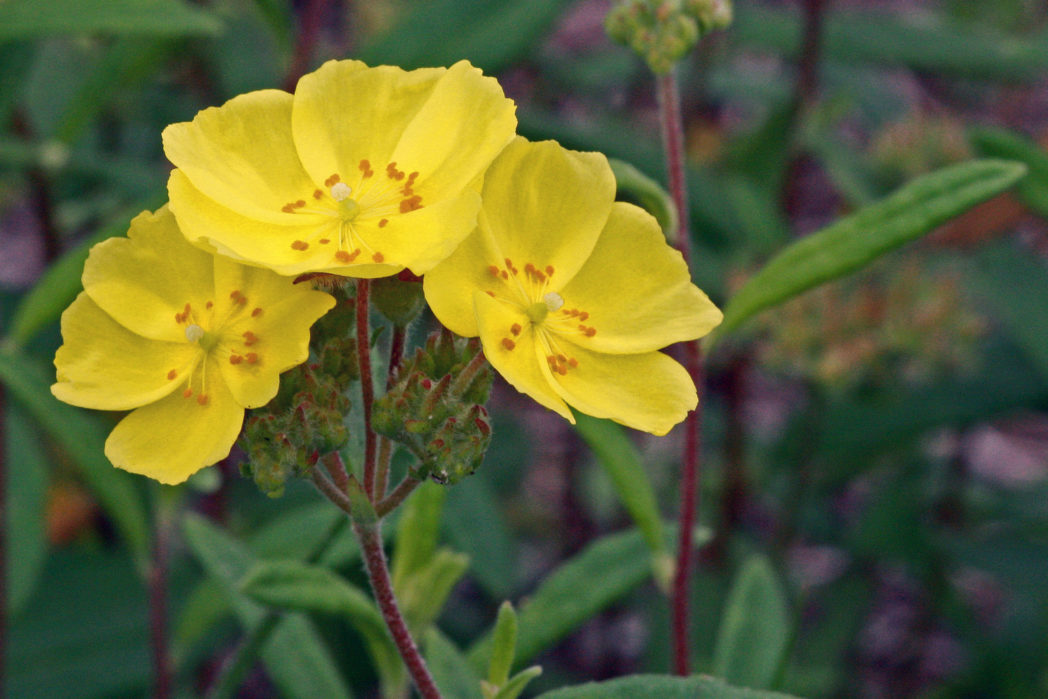Pinebarren frostweed
Pictured above: Pinebarren frostweed (Crocanthemum corymbosum) by Mary Keim. Click on terms for botanical definitions. View post as a PDF.
Pinebarren frostweed is a perennial mound-shaped subshrub that occurs naturally in sandhills, dry flatwoods, dunes and other dry, sandy areas. Its delicate lemon-yellow flowers bloom spring through summer and attract a variety of pollinators. Blooms are many, and they last only one day.
Pinebarren frostweed flowers are five-petaled and slightly concave, coming together as a shallow bowl. The petals have ragged, squared-off edges. The pistil is superior, meaning it is attached above the petals and entirely visible. Stamens are relaxed and tend to lay flat against the petals. Anthers are bright orange. Flowers are arranged in corymbs, giving the inflorescence a flat-topped appearance. Leaves are elliptic to linear with deep venation. Margins are slightly revolute. Seeds are borne in capsules.
Like other members of the Cistaceae family, Pinebarren frostweed is fire-adapted. The plant casts its seeds during its growth period, but the seeds do not germinate right away. The seeds have a hard coating that water cannot permeate, so they remain dormant for a long period. Once fire passes through the landscape, the coating softens, and the seeds germinate. This allows the plant to produce a lot of progeny simultaneously.
The genus name Crocanthemum comes from the Greek crocos or “yellow.” The species epithet corymbosum refers to the corymbose arrangement of flowers.
Family: Cistaceae (Rock-rose family)
Native range: Nearly throughout
To see where natural populations of Pinebarren frostweed have been vouchered, visit florida.plantatlas.usf.edu.
Hardiness: Zones 8A–10B
Soil: Dry, acidic to neutral, sandy soils
Exposure: Full sun
Growth habit: up to 1’ tall and 1–2’+ wide
Propagation: Seed
Garden tips: Pinebarren frostweed is not typically available commercially. Visit a natural area to see it!

